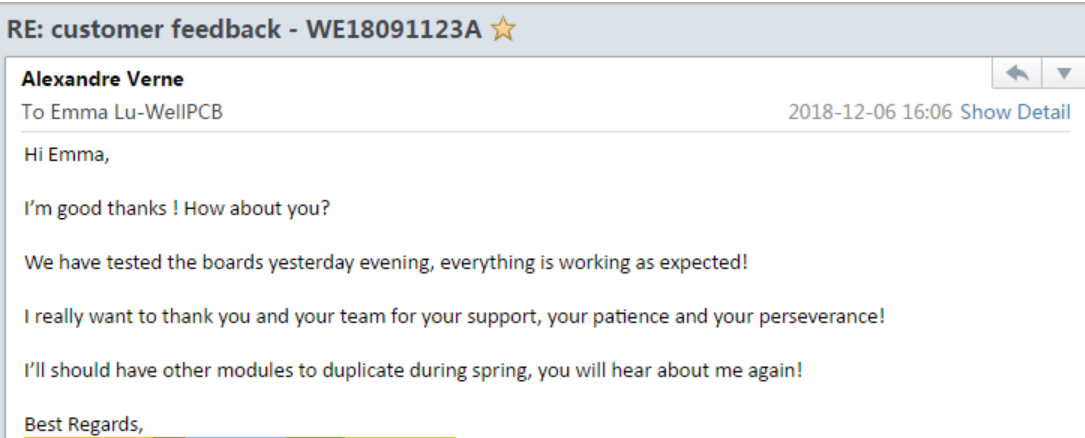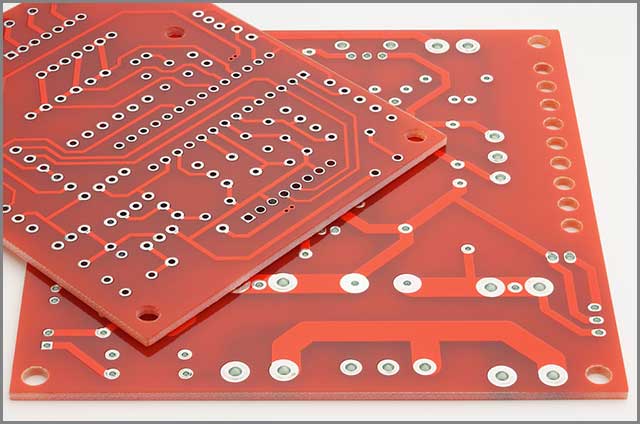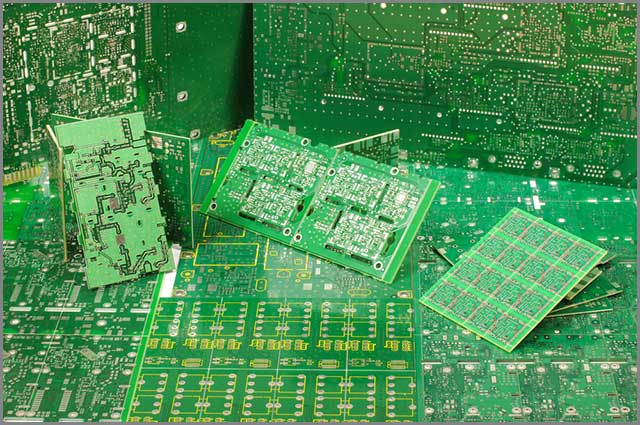Types Of PCB
- Our company can help you pick the exact circuit board that matches your requirements.
- We offer several products for your needs like manufacturing PCB and assembly PCB.
- Whether you are going for a single-sided PCB, a double-sided PCB, or any other type of PCB, You can contact us, and we will be happy to serve you.
- PCB Fabrication, components procurement and assembly, all-in-one from one simple platform.
- BGA and Micro-BGA installation and rework with 100% X-Ray Inspection, Automated Optical Inspection, Aqueous Cleaning and PCB Testing Services.
- In case our PCB is not usable due to our fault, you can ask for compensation, we can refund or rework for you.
PCB Assembly
Capabilities
-
Placer Speed:6000 Chips/Hours
-
Lead time:25+Days (To Be Decided)
-
SMT:SMT, Through Hole Assembly Single / Double-Side SMT, Single / Double-Sides Mixture Assembly.
-
PCB Size:50 mm×50 mm ~450 mm×406 mm
-
PCB Thickness:0.5mm~4.5mm
-
Min. Diameter / Space of BGA:0.2mm / 0.35mm
-
Qualifications:ISO 9001:2008
-
Accuracy:<±40 µm, Under the Condition of 3σ,CPK≥1
-
Min.Line / Track Width:3mil
-
Minimum Width / Space of QFP0.15mm / 0.3mm, Minimum Diameter / Space of BGA: 0.2mm/0.35mm
-
Reliability Test:Flying Probe Test / Fixture Test, Impedance Test, Solderability Test, Thermal Shock Test, Hole Resistance Test, and Micro Metallographic Section Analysis, etc.
PCB assembly
process
-
1Send Files To Us(Gerber&BOM)
-
2Quote In 24 Hours
-
3Confirm The File and Order
-
4PCB Fabrication Part procurement
-
5Soldering, Testing Quality Control
-
6Packaging& Delivery
PCB assembly
cost
Prototype+Components Procurement+Soldering+Testing
More Discounts for Medium-Volume Prices
Accept T/T, cash, credit card, PayPal, bank transfer, etc.
Our two factories have price support for different orders
PCB assembly
Lead Time
Average production time for Printed Circuit Board Assembly) is board presented after the entire parts and components get soldered and rightfully installed. A PCBA orders:
- * Please triple-check all files and information before placing the order.
- * Shipping time depends on the destination country and the shipping method selected.
How to order
In Order To Quote You, We Need:
Gerber File
.brd / .pcb / .pcbdoc / .gbr / .cam
BOM
The Microsoft Excel format (.xls / .xlsx / .csv / or tab-delimited)
why us
Quickturn PCB Assembly
- PCB fabrication and parts procurement are carried out simultaneously, saving time
- Prototype orders placed within 24 hours
- Quote and Order Online at any time
Competitive Price
- Our price is one of the most competitive in the world
- Own factory with reasonable cost control, no hidden cost in it
- Accept T/T, cash, credit card, PayPal, bank transfer, etc.
- Our two factories have price support for different orders.
On-Time Delivery
- Standard methods are DHL and FedEx, door-to-door service. Average Shipping Time only 2-4 Days.
- Cooperate with two transportation companies for many years with discounted prices
- Anti-static+Moisture-Proof+Anti-Vibration Packaging; Inspection certificate
- Professional agent To Iran, Pakistan
Quality Assurance
- All products follow the IPC or UL Standards and the ROHS&REACH standards.
- 98% customer positive evaluation and satisfaction Standardized factory processes and management Multiple testing services
Return and Refund
- In case our PCB is not usable due to our fault, you can ask for compensation.
- We can refund your account directly or rework the unusable boards or re-fabricate your PCB and re-ship to you at our cost, but please cooperate to solve the problem if you need to rework.
Testimonial

NXP France
Types of the Circuit Board
– – How To Choose
Single-Sided PCBs
- A single-sided printed circuit board is the least complicated one.
Double-Sided PCBs
- Double-sided printed circuit boards are more common because of their high usage properties
Multilayer PCBs
- The multilayer printed circuit boards are using the latest technology in double-sided boards.
Rigid PCBs
- The printed circuit boards are not just categorized based on their layers and sides.
Flex PCBs
- Flex is short for flexibility in this printed circuit board type.
Rigid-Flex PCBs
- The last type, the rigid-flex printed circuit boards, are both rigid and flexible.
Contact us
Nowadays, printed circuit boards are everywhere. we interact with many PCBs daily. They have made our life easier and advanced.
There is no way you can isolate yourself from this, and hence a deeper understanding of the PCB would do you good. The article will help to make these technical aspects clear for you so you can find the most suitable type of circuit board for your needs.
The following content is more detailed
[contact-form-7 id=”47680″ title=”Contact form 1_copy”]
6 Types Of Printed Circuit Boards – How To Choose
Nowadays, printed circuit boards are everywhere. we interact with many PCBs daily. They have made our life easier and advanced.
There is no way you can isolate yourself from this, and hence a deeper understanding of the PCB would do you good. The article will help to make these technical aspects clear for you so you can find the most suitable type of circuit board for your needs.
Table of Contents
Nowadays, the types of printed circuit boards are everywhere. We interact with many PCBs daily. They have made our life easier and advanced.
There is no way you can isolate yourself from this, and hence a deeper understanding of the PCB would do you good. The article will help make these technical aspects clear for you to find the most suitable type of circuit board for your needs.
1. Types of the Circuit Board
Printed circuit boards come in different types because of their characteristics. The copper rails that connect the different components from their point of location are very easy to identify. They are what differ the design for each circuit. But there are also some other major differences.
The special tools required to make the PCBs add to their special aspects. Let’s cut straight to the chase and find out about the types of circuit boards:
1.1 Single-Sided PCBs

A single-sided printed circuit board is the least complicated one. It uses one layer of the substrate which is the base material. As copper is a very good electric conductor, the one side of the base is filled with a thin yet proper layer of this metal. After the copper layer, there is a protective solder mask which adds to the property of this PCB. After this, a silkscreen coat is applied to complete the look of the board.
The name single-sided comes from the organization of the board. The electronic components are all located on one side of the board. The advantage of this board is that it works best for all simple electric items. The cost of these circuit boards is less as compared to other types, and these can easily be produced in large quantities. However, just like the coin has two sides; thisPCBhas limitations to low electricity items, and that means these boards do not work best for all the products.
1.2 Double-Sided PCBs
Double-sided printed circuit boards are more common because of their high usage properties, In this, both the bases have a metal layer, and the parts connect to both sides. The electric components are spread evenly on the whole board. The holes in the board are added to make things easier. The two ways to do this are surface mount and through-hole technologies. The first type involves tiny wires called leads to slide through the hole and go to the other side.
The latter, on the other hand, does not include any wires. Instead, in this type, the PCB includes numerous small leads that are soldered on. This technology increases the efficiency of the board allowing it to perform more functions in less time and space. The advantage of double-sided PCB is that it has less weight and does more work at a time. The disadvantage is that it is dangerous to handle.
1.3 Multilayer PCBs

The multilayer printed circuit boards are using the latest technology in double-sided boards. There are more than two layers of the substrate on the board, and the insulating materials are used on every layer. The same technologies are used to connect the various components on the board just as in the double-sided boards. The main advantage of the multilayer board is that it saves more space than the previous types. You can add as many layers as you want. In summary, multiplayer boards are more technical, and if you get one thing wrong, your whole board becomes useless.
1.4 Rigid PCBs
The printed circuit boards are not just categorized based on their layers and sides. While it is true that the main difference is the number of layers, this is not the only difference. The rigid PCB is made because of the varying rigidity it has. When you first imagine a PCB, you will probably form the image of a rigid PCB in mind. This type of circuit board makes use of solid, inflexible, and strong substrate material. Fiberglass is the best option as it keeps the board from bending and prevents any damage.
1.5 Flex PCBs
Flex is short for flexibility in this printed circuit board type. As you can probably already guess, the flex PCB makes use of a WellPCB offers DC motor controllers in both domestic and international markets. We have a flexible plastic which is layered on the base. This substrate material allows the board to fit into different shapes according to your needs. You can easily bend this board and keep it safe in all conditions. The disadvantage of this board type is that it is more costly than the other designs. However, the advantage is that these boards are very light in weight and are used in all the latest equipment.
1.6 Rigid-Flex PCBs
The last type, the rigid-flex printed circuit boards, are both rigid and flexible. It is a confusing concept, but the main idea behind these boards is that you use them with items that require a strong board. However, it is still flexible. The circuit board is rigid, but it connects to a layer of the flex circuit board. The disadvantage of these boards is that they are very complex to make. However, they are also the most useful and can address most needs.
Now, moving forward let’s get to know about the points that are imperative to keep in mind while or before selecting a certain type of circuit board for your particular requirements. So, without further ado, let’s see what should be remembered before getting a circuit board:
2. Types of the Circuit Board – Factors to Consider When Choosing
When choosing a board type, there are some factors that you must consider. These are very important to understand.
|
|
|
|
|
|
|
|
Conclusion
Our company can help you pick the exact circuit board that matches your requirements. We offer several products for your needs like manufacturing PCB and assembly PCB.
When you go for a printed circuit board shopping, various things might get you confused. Whether you are going for a single-sided PCB, a double-sided PCB, or any other type of PCB, You can contact us, and we will be happy to serve you.
Hommer

Hommer
Hi, I am Hommer, the founder of WellPCB. So far we have more than 4,000 customers worldwide. Any questions you can feel free to contact me. Thanks in advance.